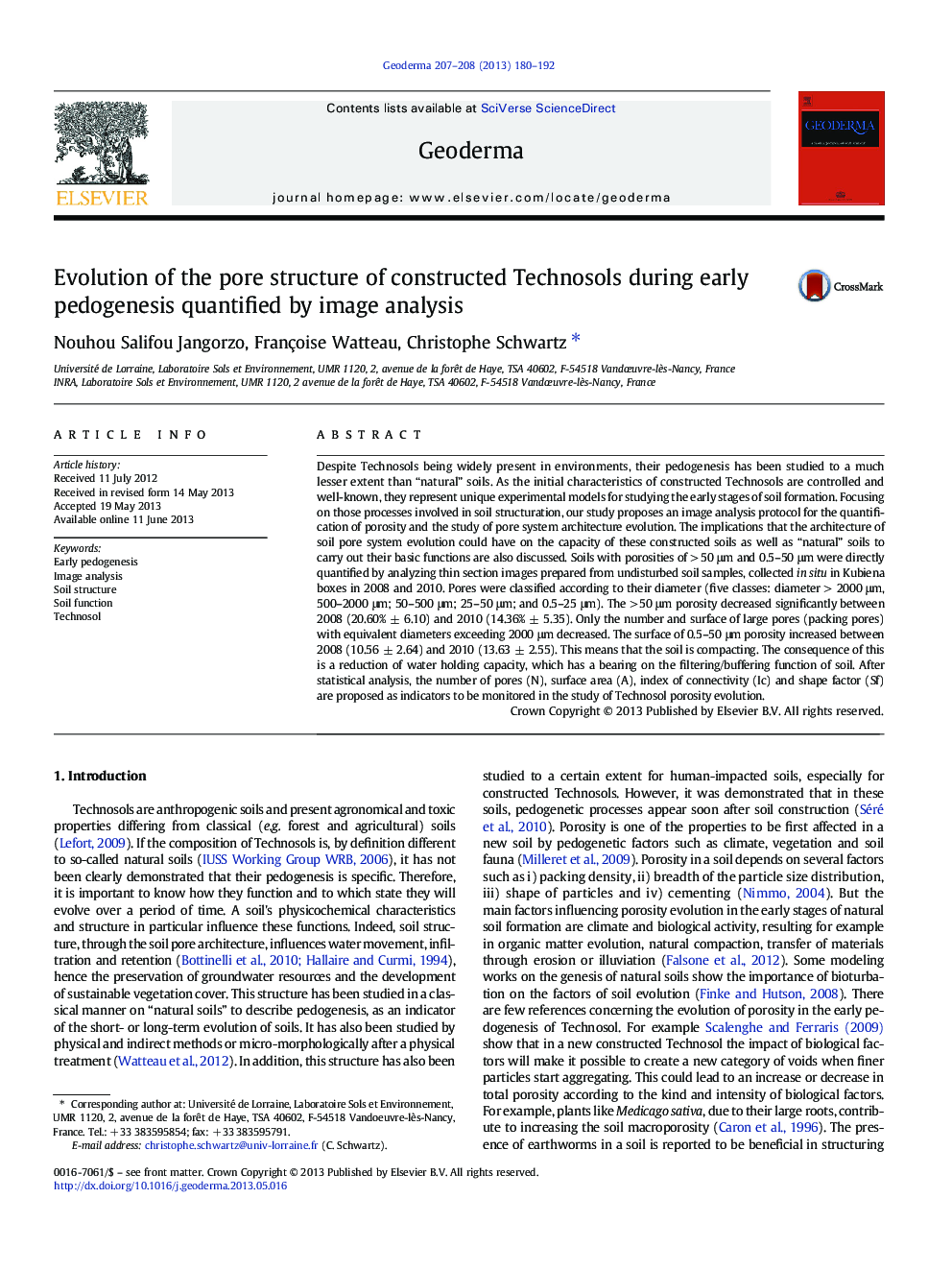| کد مقاله | کد نشریه | سال انتشار | مقاله انگلیسی | نسخه تمام متن |
|---|---|---|---|---|
| 6409166 | 1629482 | 2013 | 13 صفحه PDF | دانلود رایگان |
- Constructed Technosols are experimental models for the study of pedogenesis.
- A protocol of image analysis is proposed for porosity parameter quantification.
- The rapid evolution of porosity in the early stages of pedogenesis is highlighted.
- Porosity parameters are selected for monitoring the evolution of soils with time.
- A tool for hydrodynamics prediction following pedological engineering
Despite Technosols being widely present in environments, their pedogenesis has been studied to a much lesser extent than “natural” soils. As the initial characteristics of constructed Technosols are controlled and well-known, they represent unique experimental models for studying the early stages of soil formation. Focusing on those processes involved in soil structuration, our study proposes an image analysis protocol for the quantification of porosity and the study of pore system architecture evolution. The implications that the architecture of soil pore system evolution could have on the capacity of these constructed soils as well as “natural” soils to carry out their basic functions are also discussed. Soils with porosities of > 50 μm and 0.5-50 μm were directly quantified by analyzing thin section images prepared from undisturbed soil samples, collected in situ in Kubiena boxes in 2008 and 2010. Pores were classified according to their diameter (five classes: diameter > 2000 μm, 500-2000 μm; 50-500 μm; 25-50 μm; and 0.5-25 μm). The > 50 μm porosity decreased significantly between 2008 (20.60% ± 6.10) and 2010 (14.36% ± 5.35). Only the number and surface of large pores (packing pores) with equivalent diameters exceeding 2000 μm decreased. The surface of 0.5-50 μm porosity increased between 2008 (10.56 ± 2.64) and 2010 (13.63 ± 2.55). This means that the soil is compacting. The consequence of this is a reduction of water holding capacity, which has a bearing on the filtering/buffering function of soil. After statistical analysis, the number of pores (N), surface area (A), index of connectivity (Ic) and shape factor (Sf) are proposed as indicators to be monitored in the study of Technosol porosity evolution.
Journal: Geoderma - Volumes 207â208, October 2013, Pages 180-192
